[javascript protected email address]
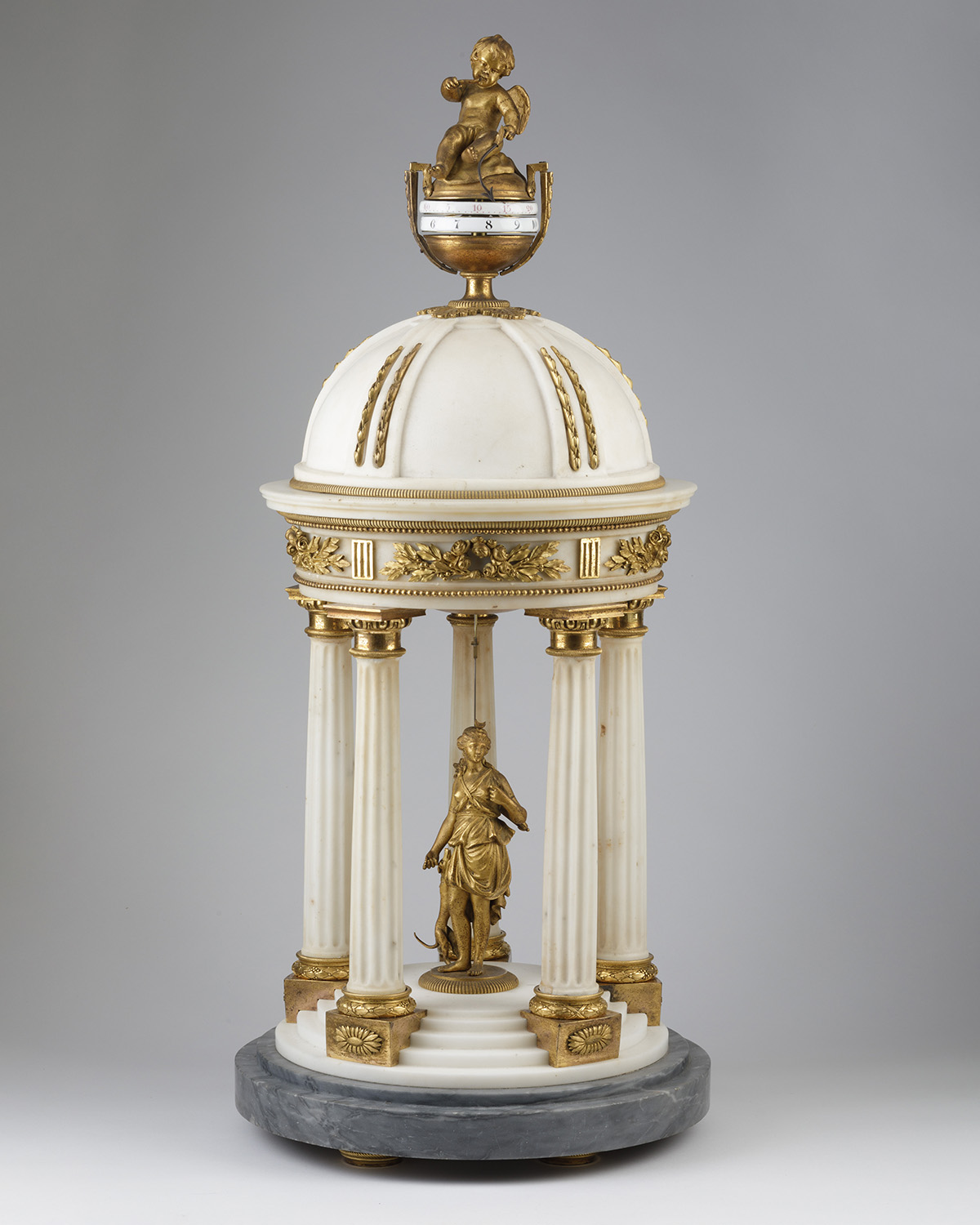
Le Roy A Paris

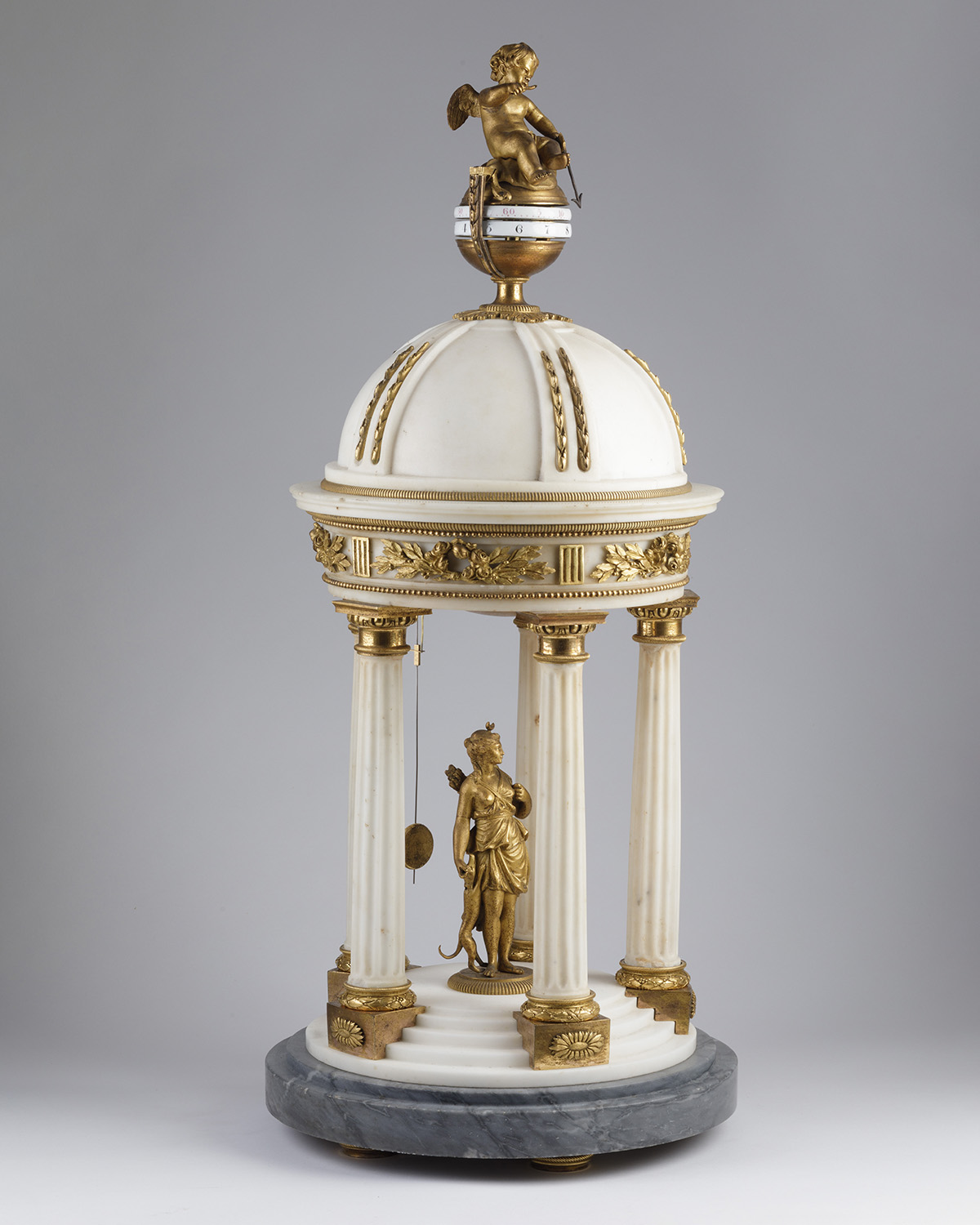
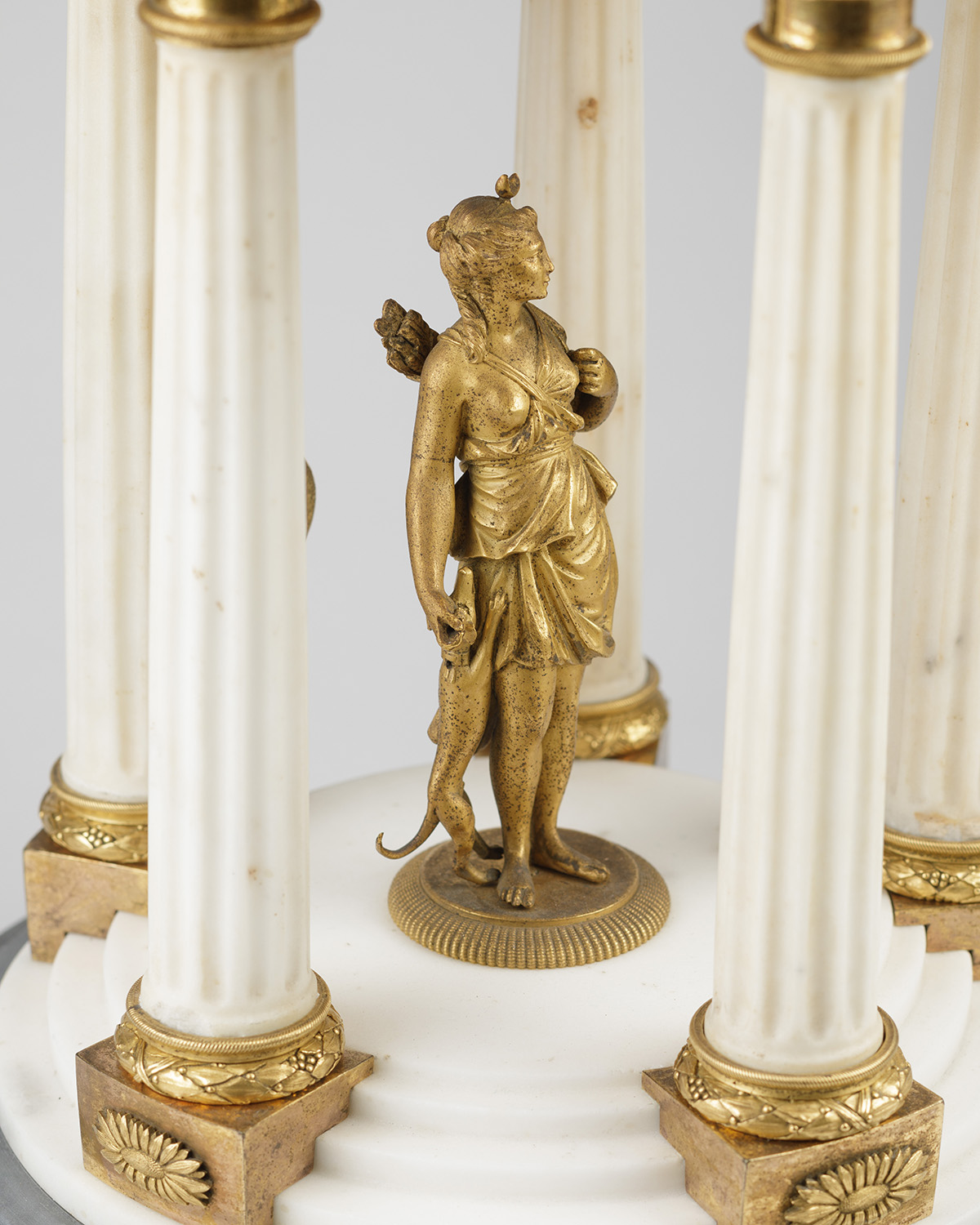
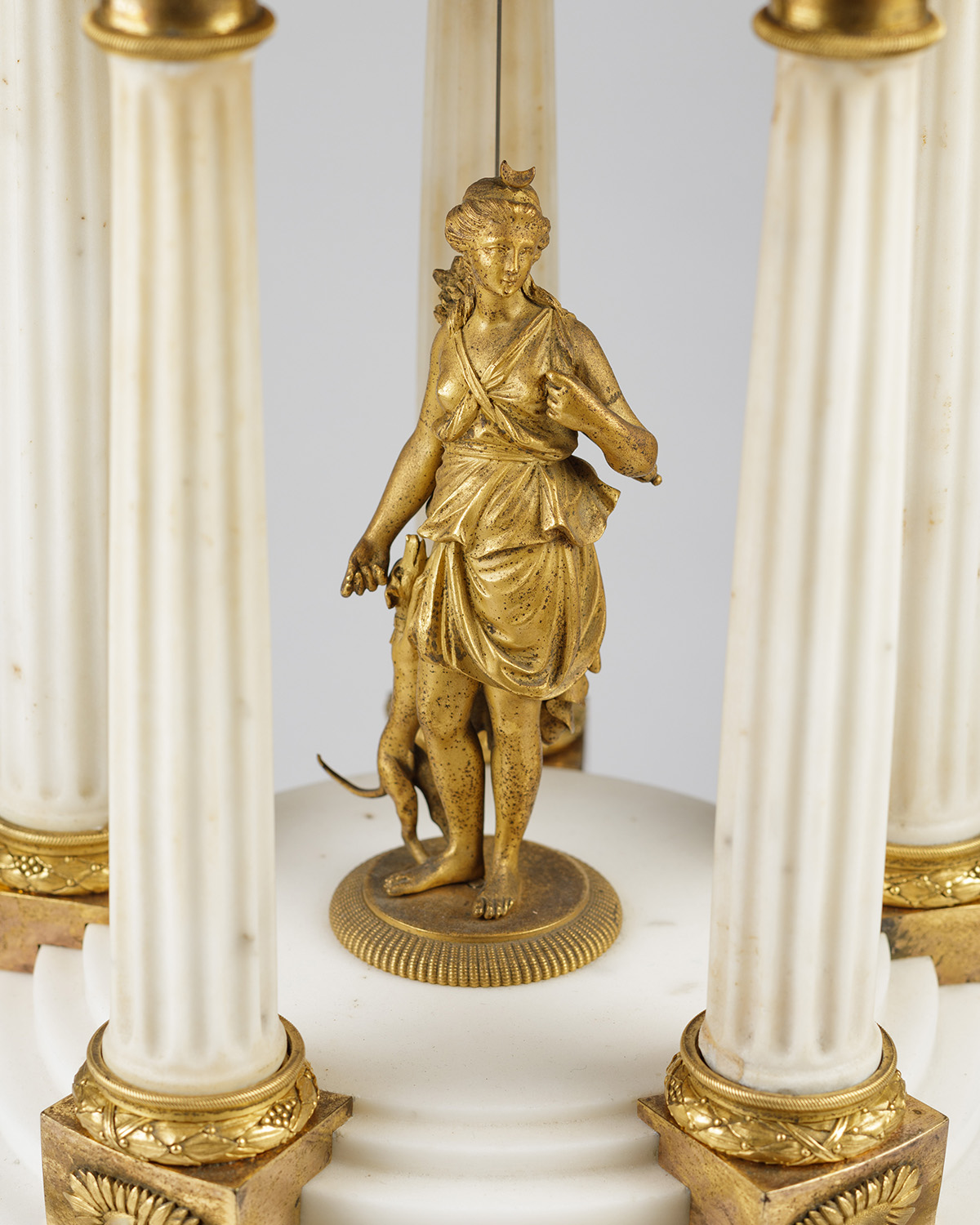
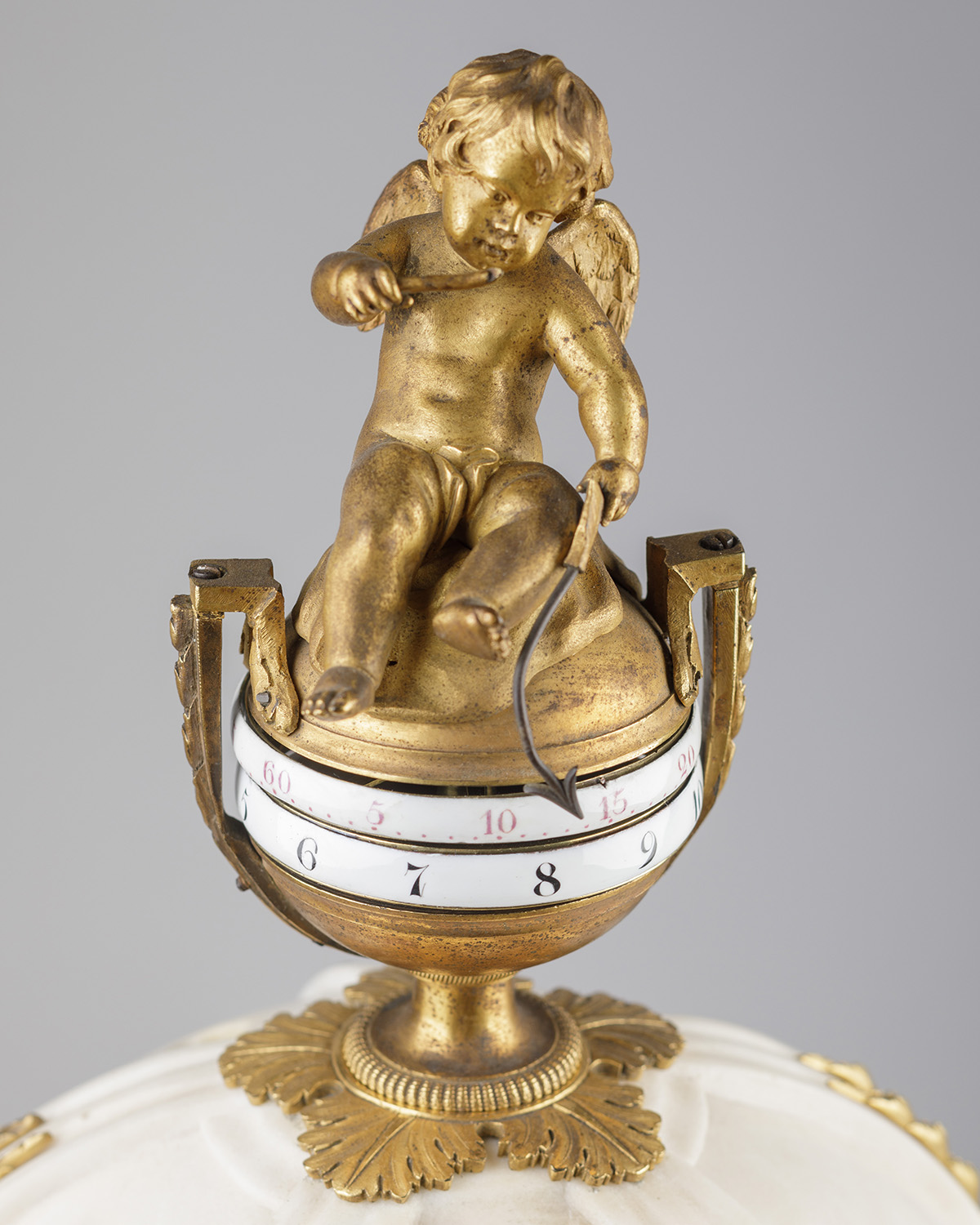
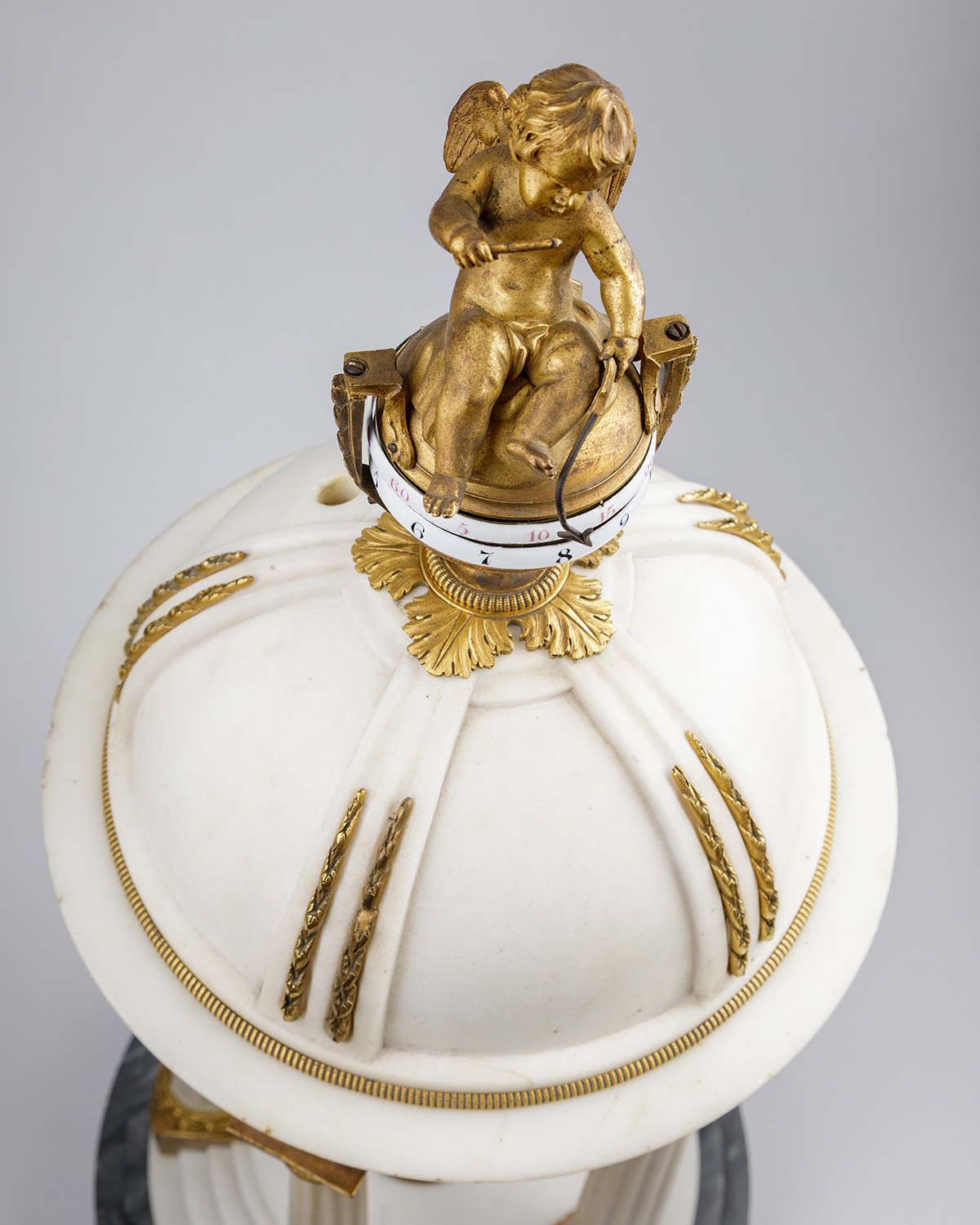
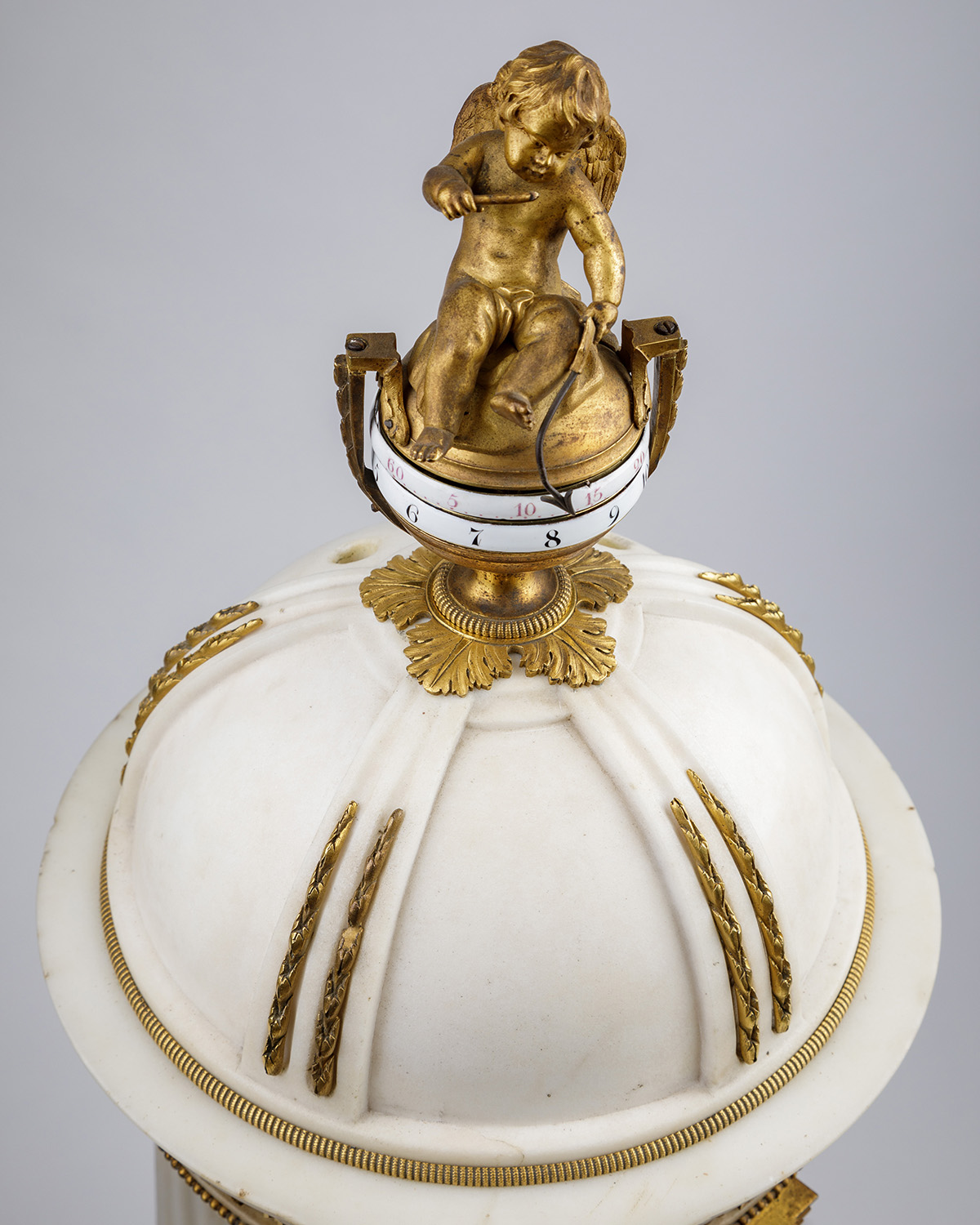
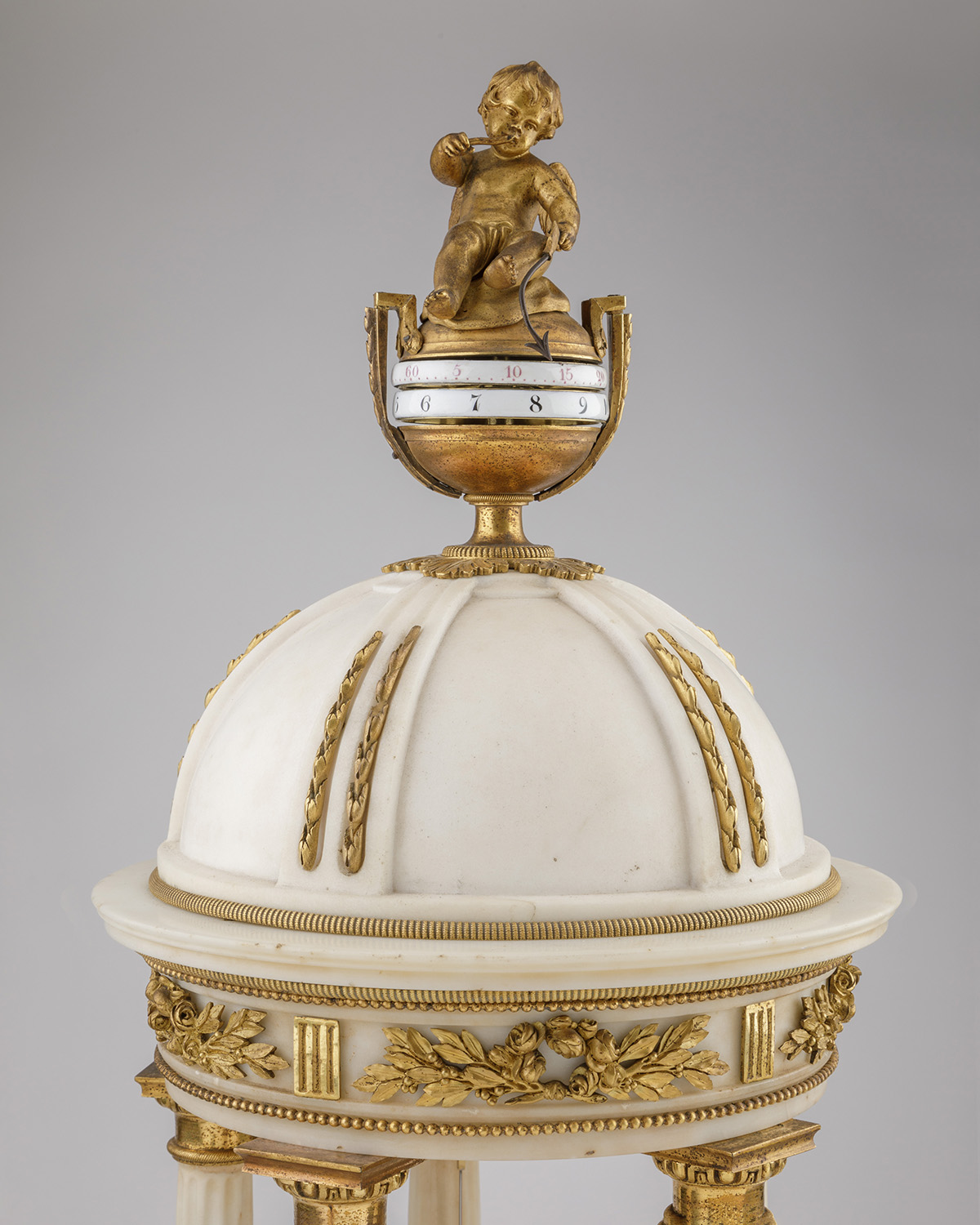
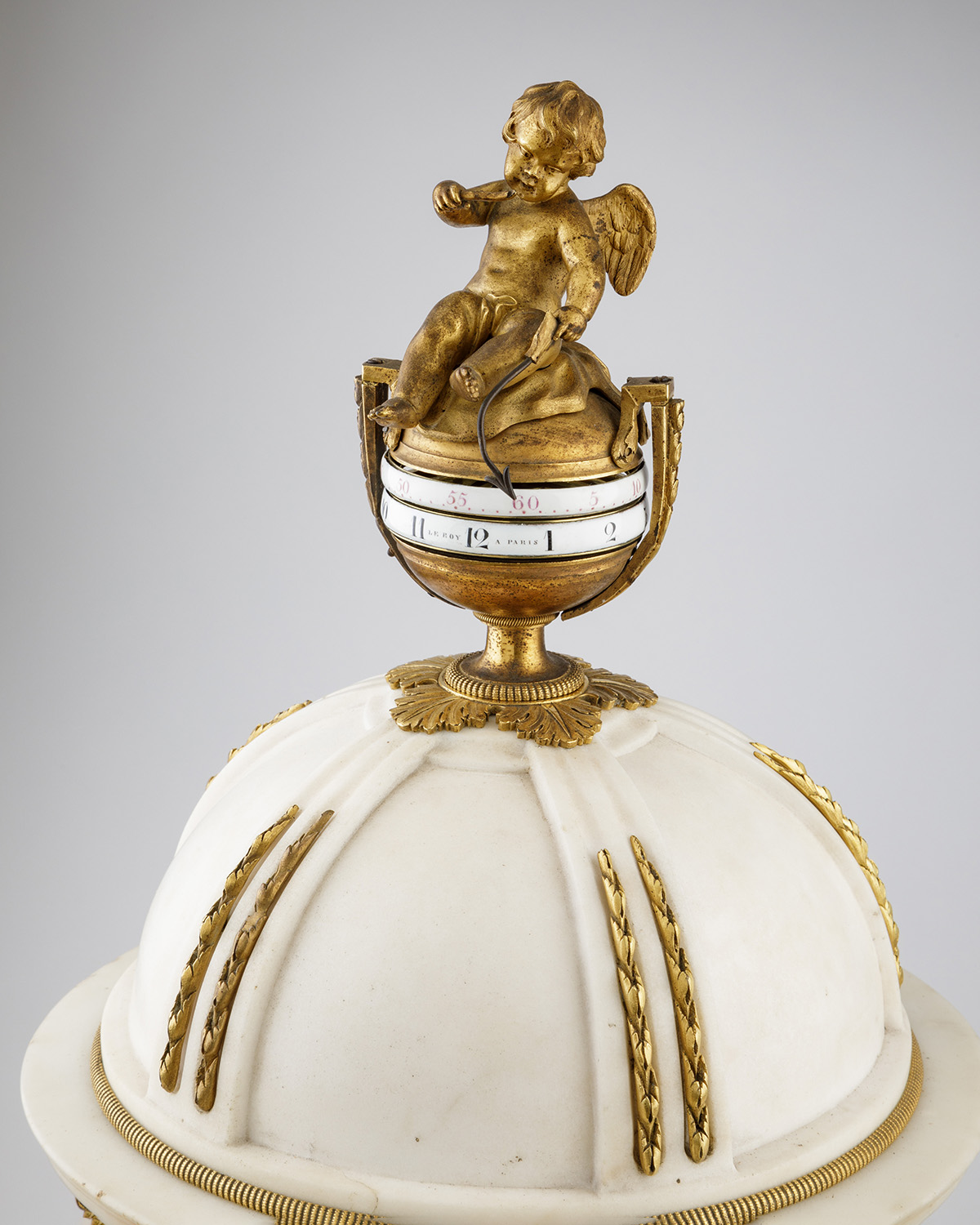
Circa 1780
Sold
A magnificent marble and ormolu-mounted hour and half hour striking table clock in the form of a temple or rotunda. The case is in the form of a temple with a domed top supported on five fluted columns decorated with fine ormolu Doric capitals, the dome itself has a frieze embellished with berried laurel and floral mounts and surmounted by a winged cupid whose arrow points to the hour and minutes which are displayed below on white enamel chapter rings or circles de tournants, the hour ring being signed Le Roy A Paris, the original movement has twin going barrels and countwheel hour and half hour strike on a bell; the centre of the temple houses an ormolu figure of Diana the Huntress accompanied by her hound; the whole clock is supported on a stepped white marble base and further grey marble plinth raised on ormolu toupee feet. This magnificent clock''s elaborate architectural design derives from the antique Greek and Roman temples, both real and fictitious, such as those that were depicted by Hubert Robert and other artists in the late 18th century. It appears, however, to have been specifically inspired by the Temple de L''Amour, built in 1777-1778 for Marie-Antoinette on the grounds of the Petit Trianon at Versailles, in that temple was placed a marble sculpture of Cupid fashioning a bow from Hercules''s club. Marie Antionette''s temple inspired many other English landscape gardeners to copy the idea for grand parkland settings at Stowe, Duncombe Park and West Wycombe Park.
